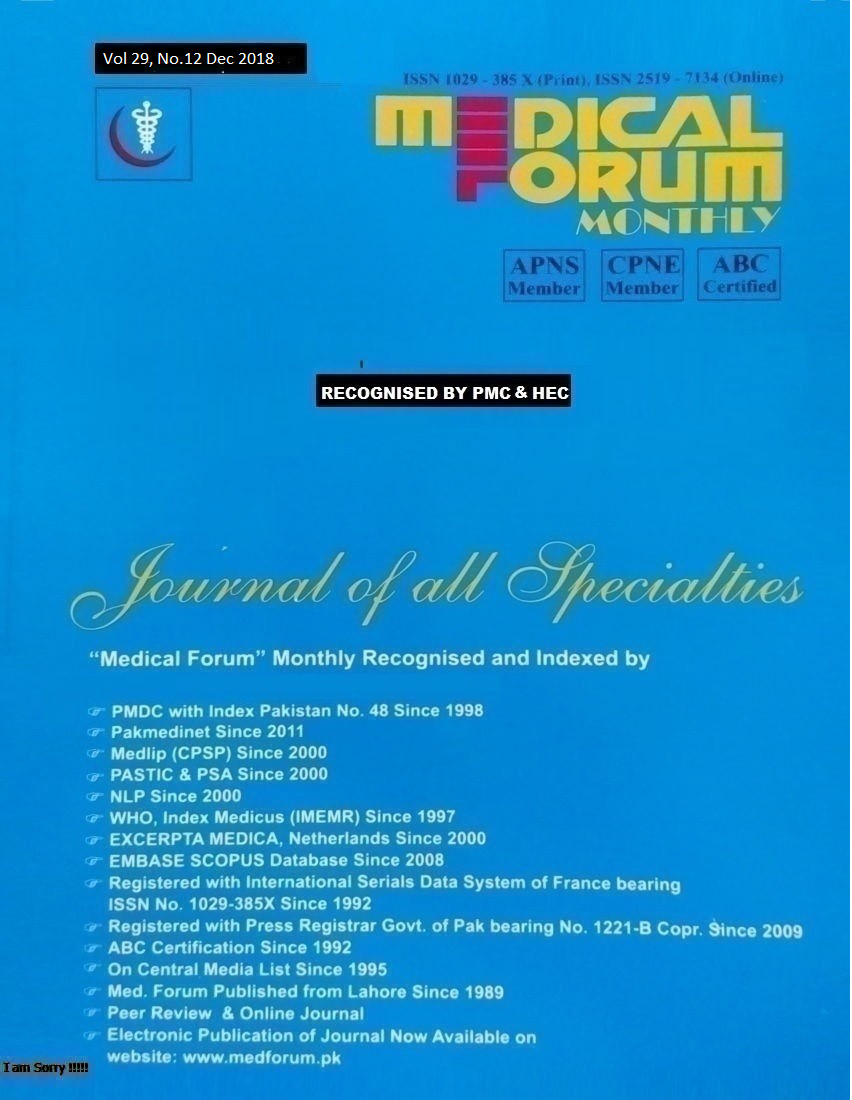
17. Significance of Cerebrospinal Fluid Lactate Level in Diagnosing Septic Meningitis
Ali Akbar Siyal1, Shamsuddin Shaikh2, Naseer Ahmed Memon1 and Syed Qaiser
Husain Naqvi3
ABSTRACT
Objective: To evaluate the significance of lactate in CSF in differentiating between the cases of septic and aseptic meningitis in our setup.
Study Design:
Place and Duration of Study: This study was conducted at the Department of Pediatric Medicine, Peoples University of Medical and Health Sciences, Nawabshah from January 2018 to June 2018
Materials and Methods: Patients were collected from Out Patient’s Department of Peoples Medical College Hospital as well as private clinics. Clinical diagnosis of septic (SM) and aseptic meningitis (ASM) was the standard of diagnosis. Neonates to 12 years old patients were included. CSF and blood samples were collected immediately after admission. CSF chemical analysis including lactate level was done on first spinal tap.
Results: A total of 144 patients were included in this study. The average age of patients was 4.2 +/- 6 months.95 (66%) were males, 49 (34%) were females. Of these 144 patients 86 (59.7%) were in SM group and 58 (40.27%) were in ASM group. Most frequent symptom in either group was fever, followed by neck rigidity in SM group and vomiting in ASM group. The value of lactate in bacterial meningitis was 5.73 mmol/L (ranging from 5.17-6.73) and in aseptic meningitis patients it was 1.72 mmol/L (1.63-1.94).
Conclusion: The best method to confirm the diagnosis of bacterial meningitis is culture and sensitivity tests but as these C/S reports take quite a longer time to help in accurate diagnosis so the lactate level in CSF could be a safe and timely alternate for this delay. But the limitation of lactate level of CSF is that it does not help in establishing the exact pathogen species.
Key Words: CSF Lactate, septic meningitis, aseptic meningitis.
Citation of articles: Siyal AA, Shaikh S, Memon NA, Naqvi SQH. Significance of Cerebrospinal Fluid Lactate Level in Diagnosing Septic Meningitis. Med Forum 2018;29(12):68-71.
